12 Jaw-Dropping Places to Visit in Austria That Aren’t Vienna

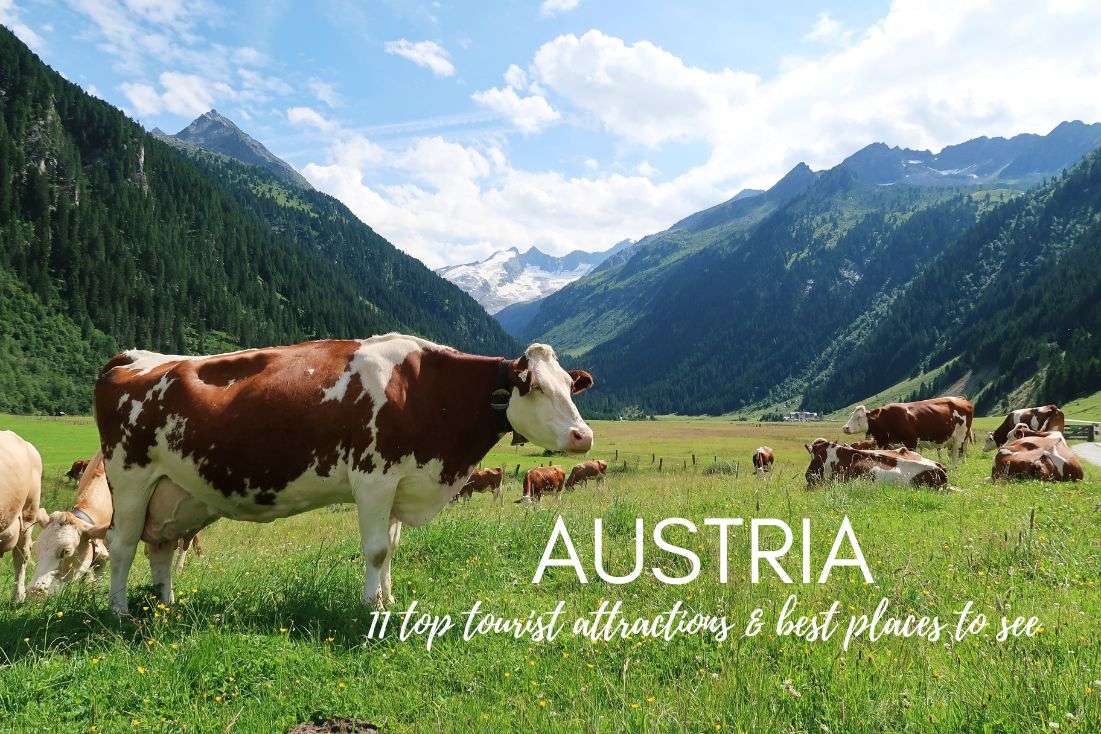
TL;DR: The best places to visit in Austria (split into categories)
Wait, really no Vienna? What about Schönbrunn Palace?
Epic nature & mountains: Austria’s best places created by Mother Nature
1. Grossglockner High Alpine Road: Austria’s most mind-blowing drive
2. Krimmler Waterfalls: Europe’s Tallest, Austria’s Most Underrated
3. Sigmund Thun Klamm: Austria’s most underrated gorge walk
4. Dachstein Glacier with heart-stopping viewing areas & cool ice caves
5. Zell am See & Kitzsteinhorn glacier: Alpine views with a bonus lake
6. Liechtenstein Klamm: Gorge walk with waterfall finale
Historic towns & castles: Places that are really worth your time
7. Hallstatt: More than just a cute Austrian village
8. Hohenwerfen Castle: Fortress with a view (and witch holograms)
9. Gmunden & Lake Castle Ort: Cute town, tiny island castle
Amazing museums: Austria’s standout spots that you won’t find anywhere else
10. Hallstatt Salt Mine: History, helmets, and slides underground
11. 007 Elements: The James Bond Museum Built into a Mountain
Some of the most incredible places I’ve ever been to are in Austria. But spoiler: none of them are in the big cities.
Let’s get one thing straight: Austria is not just Vienna. While it’s nice and clean and has palaces and classical music and overpriced sachertorte, you haven’t seen Austria until you’ve gotten the heck out of there. If you stop your trip at Schönbrunn, you’ve basically come to a mountain-packed paradise and spent it in a museum gift shop.
This guide is for travelers who want the real Austria—the waterfalls that come out of nowhere, the roads that’ll get you into road tripping, the towns so photogenic even China cloned them (no, seriously, that actually happened).
You won’t find a “Top 10 Instagrammable Spots in Vienna” list here. What you will find: the most spectacular, underrated, and occasionally insane places to visit in Austria. Whether you're a hiker or nature enthusiast, a Bond fan, or just looking for that something extra special, this one’s for you.

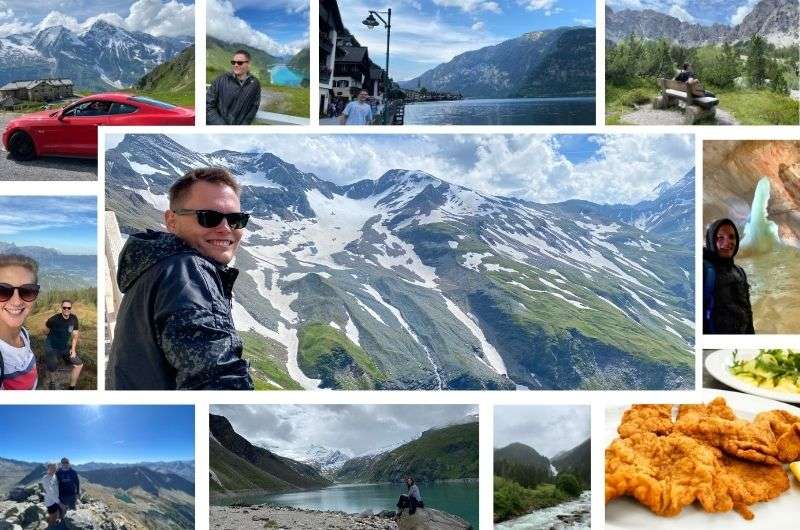
Sampling Austrian tourist attractions
TL;DR: The best places to visit in Austria (split into categories)
To help you plan your trip (or justify skipping Vienna entirely), I’ve split these Austria highlights into 3 useful categories:
Epic nature & mountains
- Grossglockner High Alpine Road
- Krimmler Waterfalls
- Sigmund Thun Gorge
- Dachstein Mountains & Ice Caves
- Kitzsteinhorn Glacier + Top of SalzburgLiechtenstein Gorge
Historic towns & castles
- Hallstatt
- Hohenwerfen Castle
- Gmunden & Schloss Ort
Amazing museums
- Hallstatt Salt Mine (Salzwelten)
- James Bond Museum (007 Elements)—near Innsbruck
- The Swarovski Crystal Worlds—near Innsbruck
Sometimes, all you need to do is take the first step... I've filtered out the best hotels in Austria for you
Save it for yourself to come back to later, or share with your friends on social media!
I've already planned your ititnerary for the trip, complete with my travel tips.
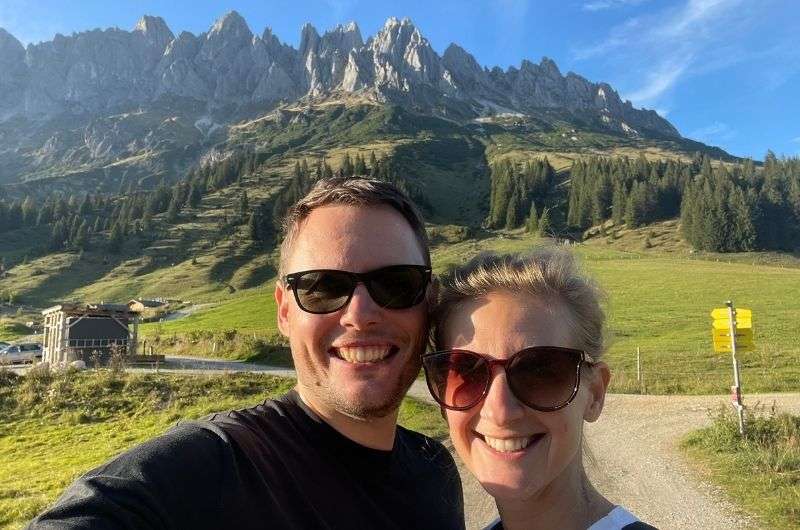
Exploring Austria’s mountains = pure happiness @ Hochkonig
Where to go in Austria? Map

The best cities to base yourself in Austria: Zell am See, Innsbruck, Hallstatt
Wait, really no Vienna? What about Schönbrunn Palace?
Glad you asked. Vienna’s fine. Schönbrunn is fine. Very pretty, actually. But this guide is about the best experiences in Austria, not just the most famous buildings. You can find Schönbrunn and St. Stephen’s Cathedral on every tourist brochure ever printed. You don’t need me for that.
If you do want to explore the capital properly, I already have a 3-day Vienna itinerary ready for you. Spice it up with the best unusual places to see in Vienna. You’ll want that after you’ve done the stuff on this list.
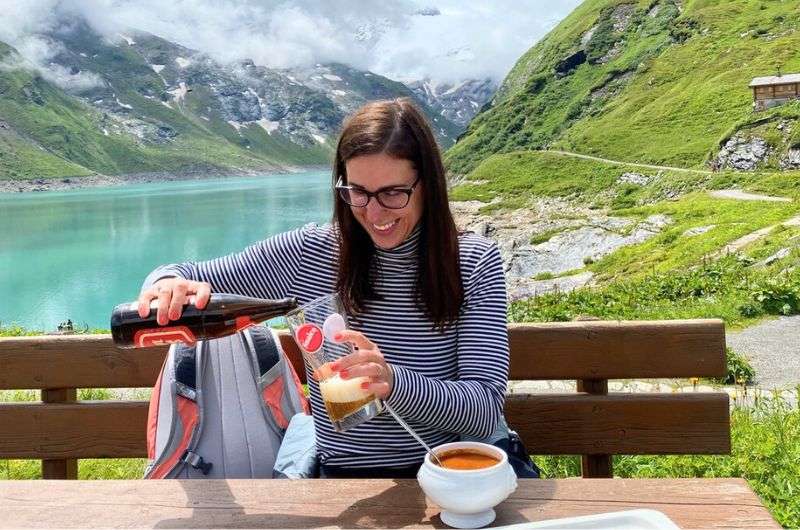
Beer, goulash, and the Austrian mountain scenery. What more could you want?
Epic nature & mountains: Austria’s best places created by Mother Nature
1. Grossglockner High Alpine Road: Austria’s most mind-blowing drive
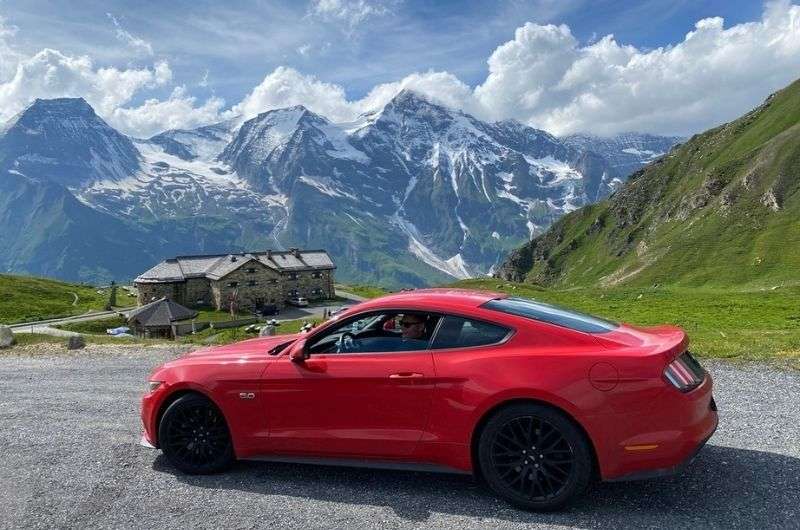
View 10/10, fresh Alpine air, orderly drivers—can’t complain (on the Grossglockner High Alpine Road)
Best time to visit:
The Grossglockner High Alpine Road is open from early May to early November (varies slightly each year depending on the amount of snow). July is peak for wildflowers and actually seeing stuff beyond fog.
Opening times: 5:30 am–9 pm in the summer (opens at 6 am and closes sooner in other months)
Price:
- Day ticket per car: EUR 45
- Day ticket per motorcycle: EUR 35
For up-to-date information visit www.grossglockner.at
How to get there:
Start in Bruck an der Großglocknerstraße. You’ll need a car (or motorcycle). Public transport won’t get you far. The 48 km (30 mi) toll road starts there and ends in Heiligenblut, with multiple chances to stop, hike, and gawk.
Why it’s better than… Driving the Autobahn between Salzburg and Innsbruck
The Grossglockner High Alpine Road is the best place to visit in Austria, period. I would also say the most beautiful place in Europe. No trucks, no boring concrete—just hairpin turns, snow-capped insanity, and infinite views.
Grossglockner is the highest mountain in Austria with 3,798 m (12,461 ft). The route leads you through the mountain range at around 2,500 m (8,215 ft). For us, it was a full-day trip, but for you, it will depend on how much you want to explore the surroundings.
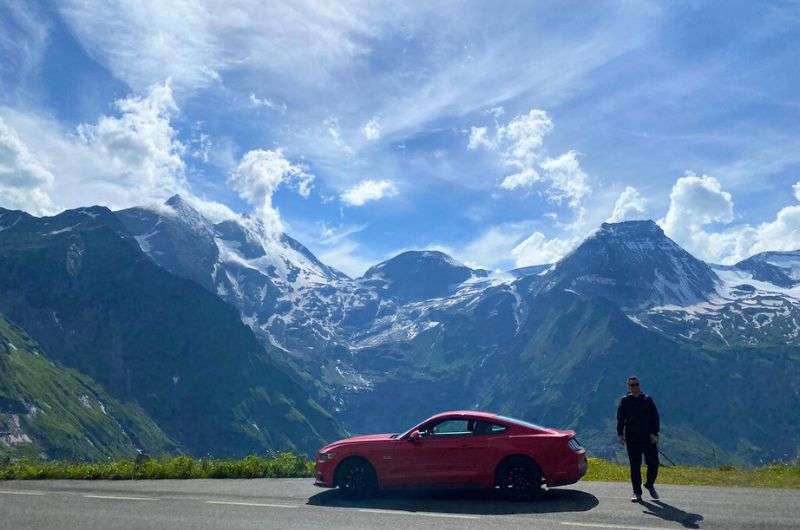
To drive with these views is just a dream...
On the way, there are numerous parking lots with hiking trails leading to the most popular lakes and peaks.
We decided to take the Grossglockner hike (as it’s obviously the most badass one). It was a tough hike, but worth it. The views are absolutely spectacular. I felt a bit like I was in Lord of the Rings, walking from meadows, through mountain lakes, to places that resembled Mordor. Sometimes I felt the urge to look over my shoulder to make sure Gollum wasn’t sneaking up on me.
Tip #1: For the best hiking trail info, I recommend komoot.com, which is much more suitable in Austria than alltrails.com.
Tip #2: The best meal to get your teeth on in the Alps is the goulash (strong meat stew). It’s usually for a reasonable price, they sell it everywhere, and is always delicious.
2. Krimmler Waterfalls: Europe’s Tallest, Austria’s Most Underrated
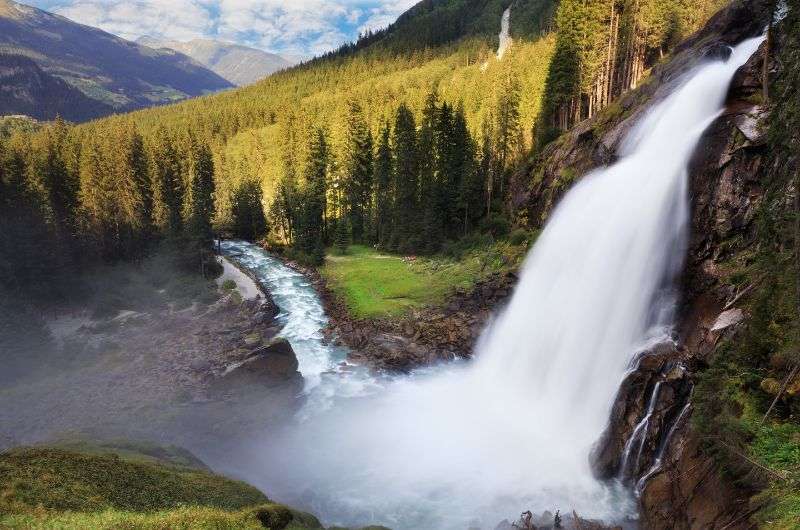
The Krimmler Waterfalls
Best time to visit:
May through September. That’s when the snowmelt feeds the flow, and all viewpoints are open. Avoid visiting right after heavy rains unless you enjoy hiking in a car wash.
Opening times:
- 9 am—4 pm daily (roughly from May to October)
Prices:
- Tickets cost EUR 9 for the waterfall trail
- EUR 15 is the combination ticket if you’re also going to Krimml WaterWorlds
How to get there:
Drive to Krimml, park in the main lot, and walk to the trailhead. It’s clearly marked.
Why it’s better than… Gollinger Wasserfall
Golling is ok for a quick stop if you’re in Salzburg, but Krimmler is on another level—literally and visually. Where your Gollinger trip is over in 20 minutes, Krimmler gives you an actual hike with an escalating payoff. It's the kind of waterfall that makes your jaw drop... not just your jaw clench because of crowds and little else.
The majestic waterfalls in Austria were probably the biggest and best surprise for me—I didn’t know there were so many, and such huge ones, too!
Located in the western part of the Hohe Tauern National Park, the Krimmler Waterfalls are the largest in Europe. You walk on a 4 km (2.5 mi) trail that offers many viewpoints and platforms leading you up to the top through the Krimml Ache Valley along the numerous waterfalls. In just 15 minutes from the parking lot, you’ll see your first waterfalls, so it’s fun right from the start.
The overall altitude gain is 431 m (1,414 ft), and the trail takes about two hours total up and down (if you’re as fast as I am). Just don’t forget to look up and enjoy the scenery while taking all those photos!
Pro tip: If you’ve got kids in tow—or just love pressing buttons and reading about water molecules—check out the Krimml WaterWorlds near the entrance. Otherwise, skip it and head straight for the actual falls.
3. Sigmund Thun Klamm: Austria’s most underrated gorge walk
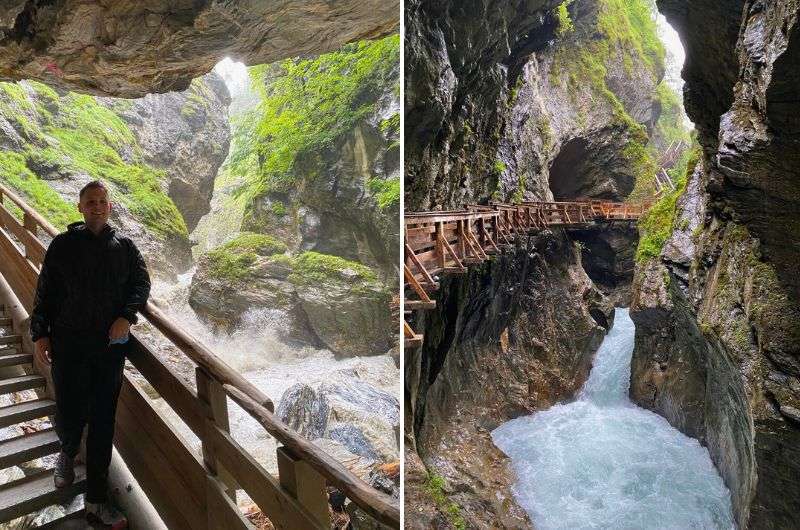
Sigmund Thun Klamm and me
Best time to visit:
June through September. Earlier in spring can still be chilly and slippery. Summer gives you the full-force flow and decent lighting for photos.
Opening times:
- Open May through October
- 9 am—5:30 pm daily (until 7 pm in the summer, but only until 3:30 pm in October)
Prices:
- Tickets cost EUR 7.50
How to get there:
Just outside Kaprun—you can even walk from town if you're feeling ambitious. There’s a parking lot near the entrance.
Why it’s better than… Lammerklamm
Lammerklamm gets listed a lot, but it’s narrow, overcrowded, and lacking that “wow” moment. Sigmund Thun is immersive, dramatic, and feels like a movie set carved by water. It’s a better value, a better atmosphere, and leaves a stronger impression.
Short, sweet, and wildly scenic, Sigmund Thun Klamm is a hidden gem wedged into the cliffs near Kaprun. The trail leads you along narrow wooden walkways through a twisting canyon where the river practically roars beneath your feet.
The main gorge trail only takes 30 minutes or so.
I was really impressed by the magnificent view from the narrow and slippery boardwalks and bridges. It’s like you’re descending in a mythical rock mass. Water barrels through narrow chutes, light filters down dramatically through mossy rock walls, it’s all so very cinematic.
Just beware, you’ll probably get a little wet, so watch your camera (I recall seeing them sell waterproof covers for your gear at the ticket desk).
Pro tip: The main gorge trail is only about 320 m long (about 0.2 miles), so you’ll get through it in 30 minutes or so. My tip is to extend the experience by including the Klammsee loop (to a small alpine lake just beyond the gorge), which adds up to an hour or more of relaxed walking. A beautiful little addition.
4. Dachstein Glacier with heart-stopping viewing areas & cool ice caves
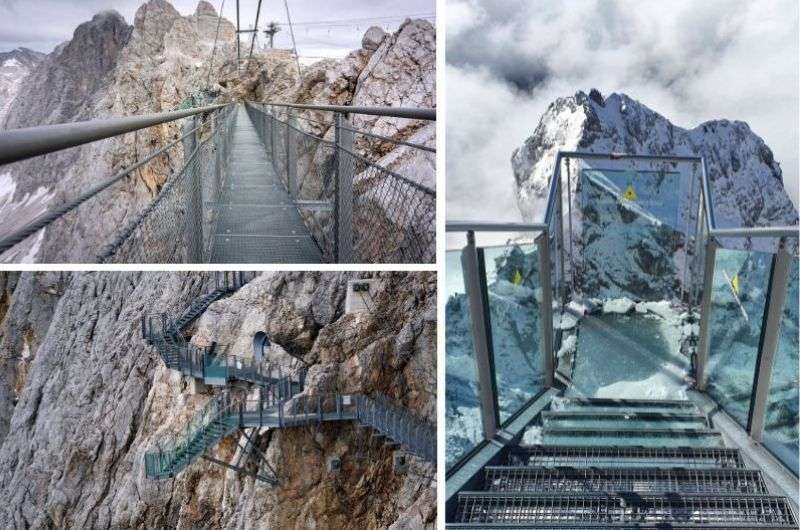
Nothing for people with a fear of heights @ Dachstein Glacier
Best time to visit:
Late spring to early autumn (May–end of October). That’s when the cable car runs every day, and you can do all the attractions in one go without needing snowshoes.
Opening times:
- First cable car ascent is 8:40 am, last descent is around 5 pm (7 pm in July and August)
Prices:
- Starting at EUR 45 for all three cable car sections, but no caves, OR just the bottom section with the caves; EUR 65 for an all-inclusive ticket
How to get there:
Drive to Obertraun and park (for free) at the Krippenstein lift station. Then it’s gondolas the rest of the way—yes, plural. Don’t expect to submit anything without opening your wallet. The caves are part of the larger Dachstein system, and well signed.
Pro tip: The highway leading to the parking lot charges EUR 20, but you can get the toll ticket validated at the mountain station near the cable cars on your way back and not pay the toll.
Why it’s better than… visiting Hallstatt and just taking pictures of the lake
Because here, you’re not just looking at mountains—you’re in them. Suspended above them. Inside their frozen guts. By all means, Hallstatt is amazing (as I’ll try to convince you in the next item), but don’t just stay within its tiny limits. Go out, explore!
The Dachstein range lies just south of Hallstatt. I stayed in Gosau at the incredible COOEE Alpin Hotel, but the whole Salzkammergut region is packed with scenic towns and alpine highlights.
Dachstein Glacier is the crown jewel. At nearly 3,000 m (9,840 ft), you’ll find multiple attractions stacked on top of each other. You take no less than 3 cable cars (gondolas) to get to the attractions.
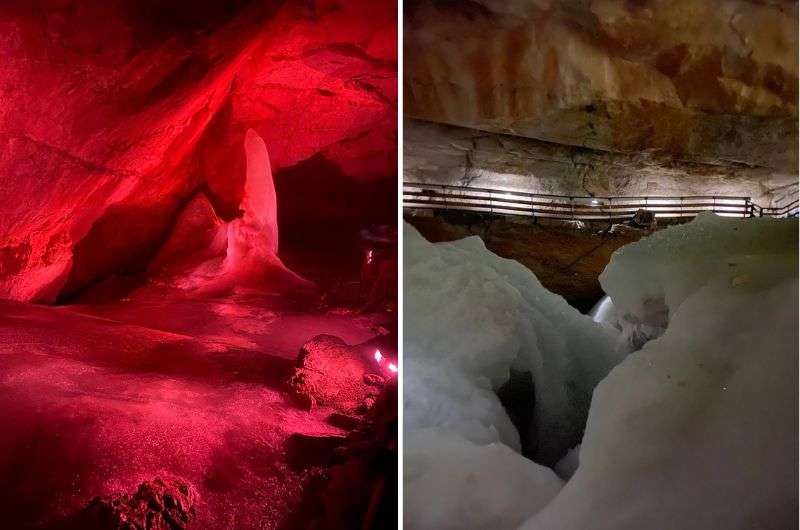
Light show in Dachstein Giant Ice Cave
Visit the exhilarating attractions on the mountain top
Start with 5 Fingers, jutting out over a sheer drop, each platform with a different design (glass floor, photo frame, etc.). Then cross the Suspension Bridge to reach the Stairway to Nothingness: 14 glass steps dangling in thin air. Terrifying or thrilling—depends on your nerves. There’s also an Ice Palace, a restaurant, and, of course, skiing in winter.
The ice caves are another must-see!
Just a cable car ride away, the Dachstein Giant Ice Cave adds another layer to exploring this incredible region.
Hidden inside the Krippenstein mountains, this frozen world is packed with icy chapels, glowing stalactites, and dramatic lighting. It’s cool—both literally and figuratively. From my perspective, a captivating ice kingdom, but compared to Dobsinska Ice Cave in Slovakia, it’s rather small. But hey, take this as a tip for another exciting trip in Central Europe.
Still, it’s worth it if you're already up there. Wear warm clothes and sturdy shoes—the cave stays at 8 °C (46 °F) year-round, and the tour takes about 90 minutes.
Read how to visit Dachstein from Hallstatt.
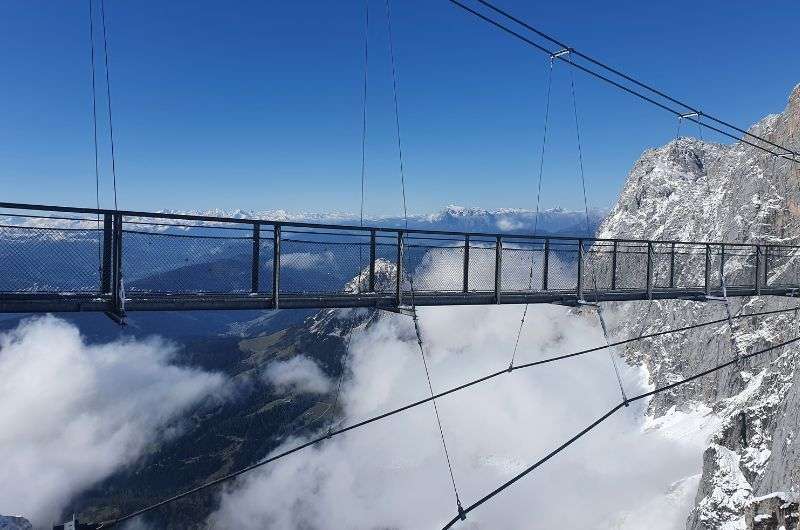
Dare to walk on the Suspension Bridge during your visit to the Dachstein Glacier
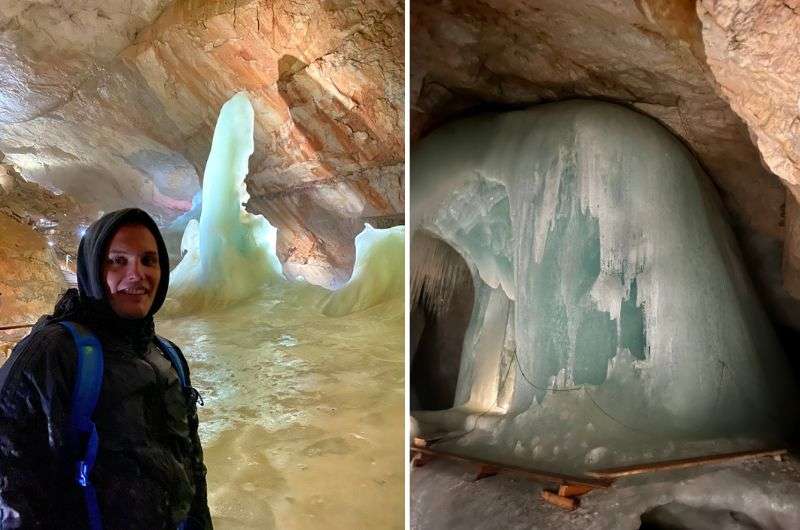
Dress warmly for the Dachstein Giant Ice Cave!
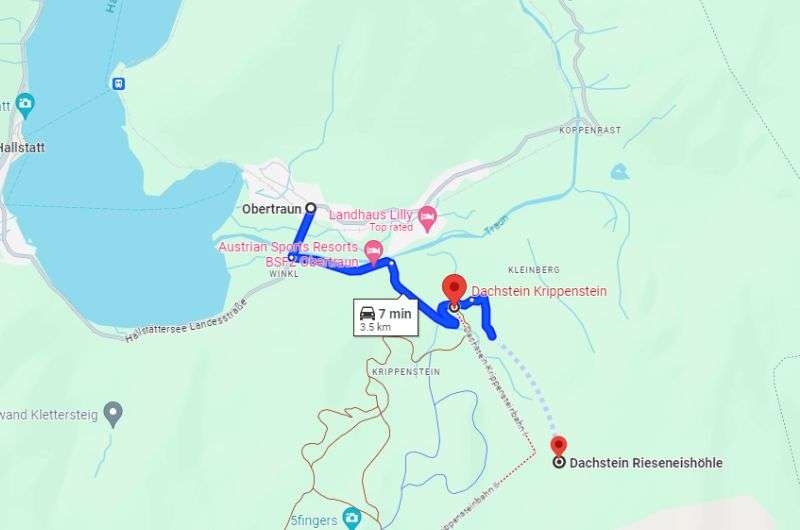
The route from Obertraun to the Dachstein Krippenstein parking lot at the cable car station
5. Zell am See & Kitzsteinhorn glacier: Alpine views with a bonus lake
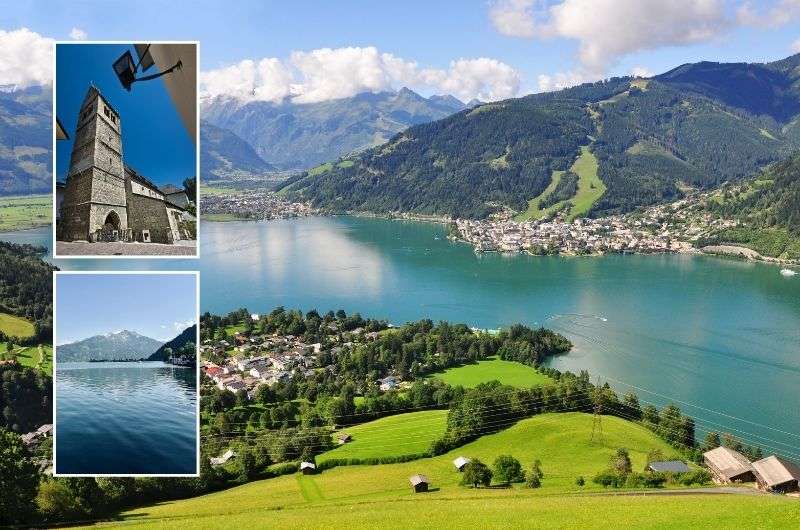
Zell am See—pretty inside and out
Best time to visit:
Late June to mid-September for hiking, or December to April for skiing. July and August are peak season—expect crowds but clear skies.
Opening times for Gipfelwelt 3000:
- Open daily year-round from 9 am–3:30 pm (longer in the summer)
Prices for Gipfelwelt 3000:
- Tickets cost EUR 59, including the cable car ascent and descent
How to get there:
Drive to Zell am See (or take the train). Kitzsteinhorn is 20 minutes away by car, then it’s all about cable cars. You can leave your car at the free parking lot, and then hop on one or more of the 7 gondola routes to the top.
Why it’s better than… staying only in Innsbruck
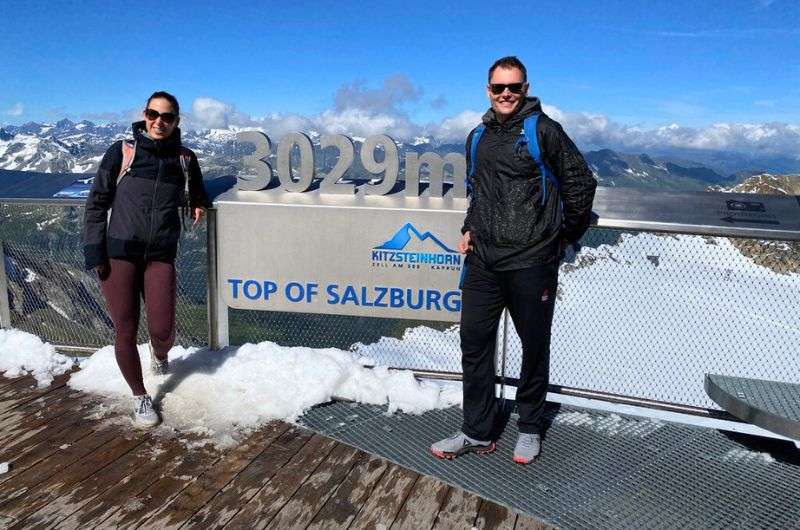
Enjoying the panoramic view at Kitzsteinhorn
6. Liechtenstein Klamm: Gorge walk with waterfall finale
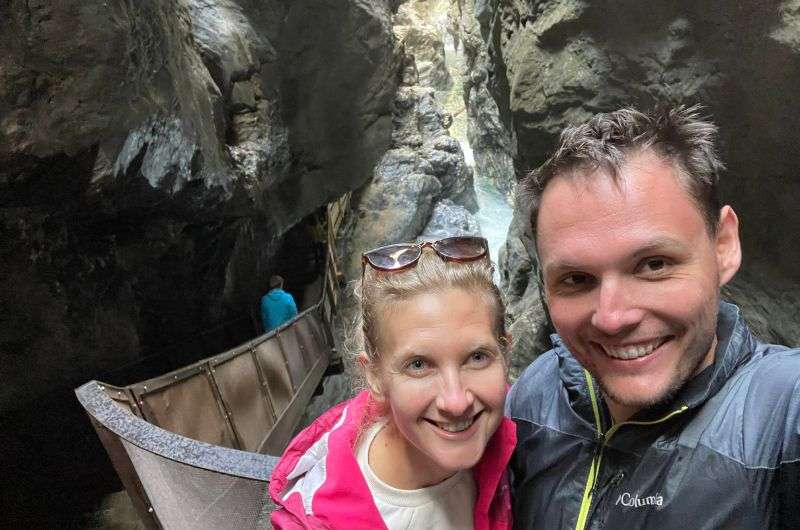
We can't wait for the waterfall @ Liechtenstein Klamm
Best Time to Visit:
May through October is when it’s open; choosing warmer months will give you a better experience, though summers will be the busiest. Come early in the morning or late afternoon to skip the worst of the crowds.
Opening times:
- Open daily 9 am–6 pm (4 pm in October)
- Closed between November and May
Prices:
- Tickets cost EUR 15
How to Get There:
Located near St. Johann im Pongau, 50 km south of Salzburg. Free parking onsite, then it’s an easy walk into the gorge.
Why it’s better than… Kitzlochklamm, which somehow keeps showing up on top gorge lists
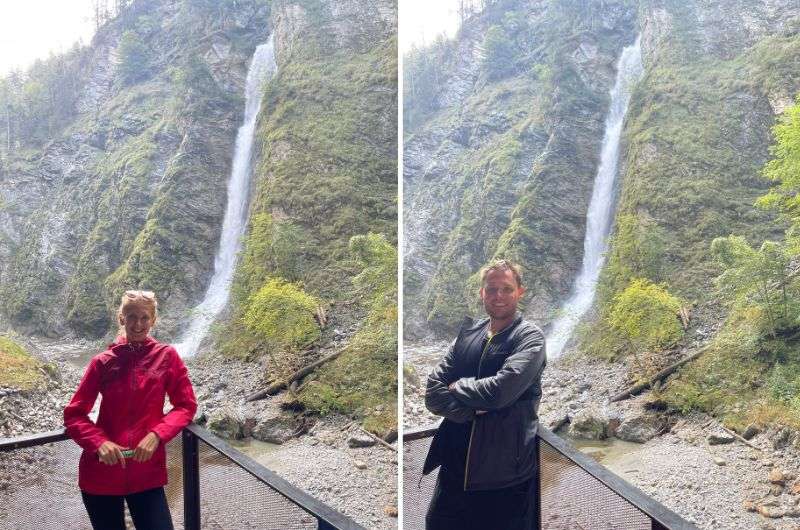
Liechtenstein Klamm waterfall
Liechtensteinklamm delivers more height, more power, and an actual payoff waterfall at the end. Kitzloch might be closer to the resorts, but Liechtenstein is where the drama lives.
Liechtensteinklamm is a narrow, dramatic gorge carved deep into the cliffs, with crystal-clear waterfalls crashing through mossy rock walls. It’s the kind of place that feels like it belongs in a Central European fairytale—and honestly, it wouldn’t be out of place in one.
Naturally, the Austrians added a legend: apparently the devil himself created the gorge by chucking water at a mountain. Not exactly their best folklore work. The real story? Prince Johann II of Liechtenstein funded the original pathways to make it accessible. Props to him.
A modern spiral staircase called the Helix now lets you descend into the gorge, up to 30 m (100 ft) under the surface—through tunnels, galleries, and roaring cascades. When I was there, I thought that I had already seen all of it, when suddenly we reached the end of the walkaway, heard the rumble, and saw the huge Liechtenstein waterfall at the end of the gorge. Worth seeing for sure!
The 4 km route takes about two hours, depending on your photo obsession and capacity for awe.
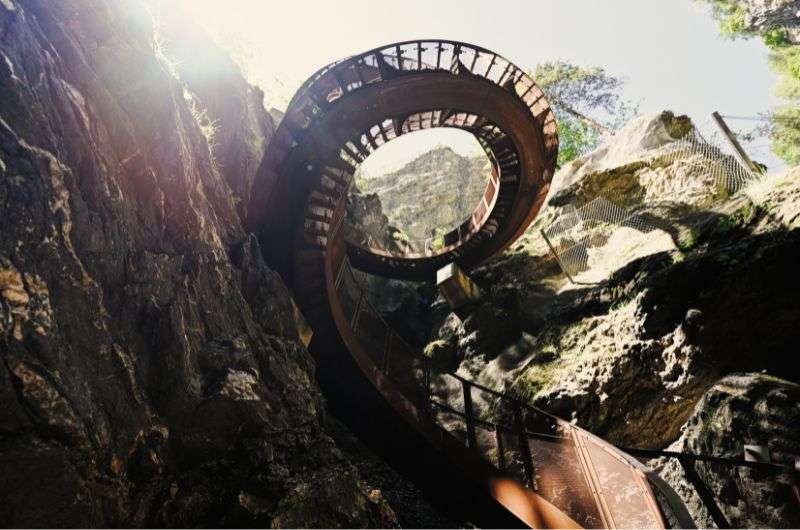
Liechtenstein Klamm
Historic towns & castles: Places that are really worth your time
7. Hallstatt: More than just a cute Austrian village
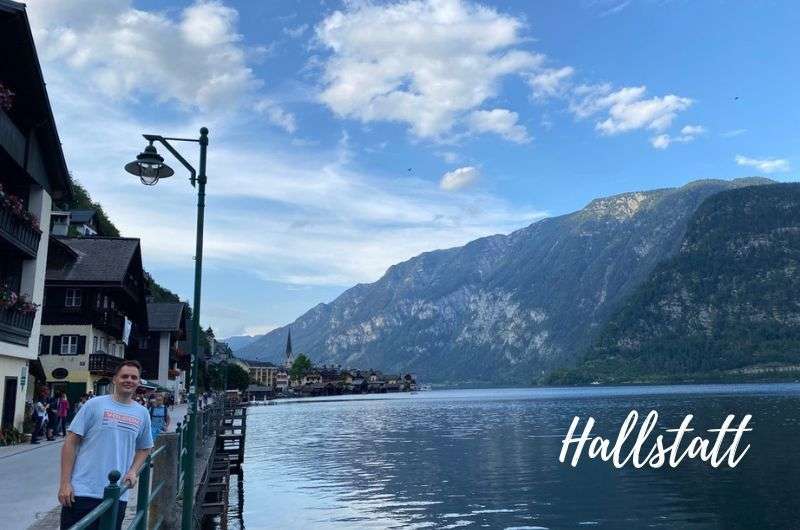
Welcome to Hallstatt

Best time to visit:
Shoulder seasons are due to the enormous crowds in peak season—late April to early June or September to mid-October. That’s when it’s still photogenic without feeling too much like a Disneyland waiting line.
How to get there:
Drive in and be prepared to spend an hour looking for a parking spot, or take a train via Attnang-Puchheim. You’ll end up at the train station across the lake, which means you get to take the ferry into town.
Why it’s better than… Salzburg Old Town
Both are pretty, both are UNESCO-listed, but Hallstatt has a lake, mountains, salt mine slides, a Skywalk, and no Mozart-themed tourism fatigue. Salzburg feels like it’s trying too hard, and it’s a one-and-done kind of place. Hallstatt… I could visit over and over again.
Hallstatt is one of those places that has high potential to be a tourist trap, but it SO isn’t! I consider Hallstatt to be one of the top attractions in Austria and one of the most beautiful towns I’ve ever seen.
What you’ll find: A small town wedged between a still alpine lake and steep, forested cliffs.
The place is ultra-photogenic, and the whole region of Hallstatt-Dachstein is also on the UNESCO World Heritage list as a Cultural Landscape. It’s even more impressive that China built its very own replica of Hallstatt in the province of Guangdong. How crazy is that?
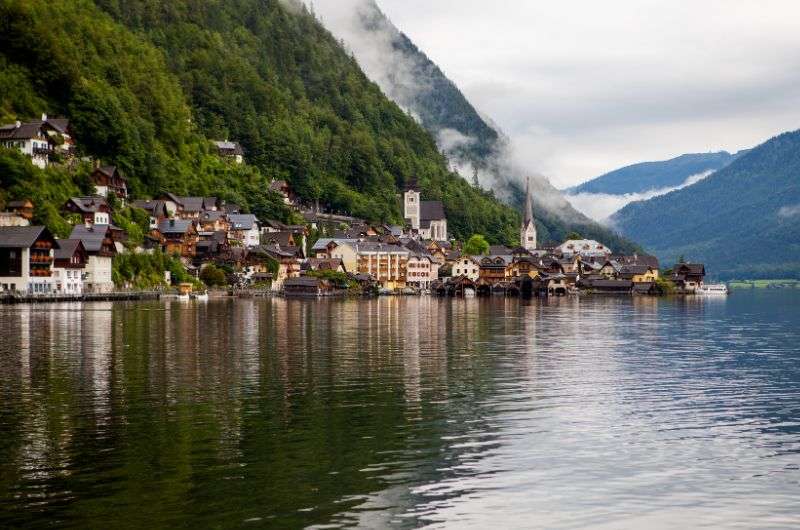
Hallstatt is my favorite city in Austria!
It’s a great base for exploring nearby hits like the Salzwelten Salt Mine and Dachstein’s 5 Fingers (full info on those two in separate items on this list), but Hallstatt itself isn’t just a pretty backdrop. The town has actual substance.
Here’s what not to miss in Hallstatt:
- Skywalk—A dramatic viewing platform high above town.
- Ossuary (Bone House)—A tiny chapel filled with skulls hand-painted by relatives.
- Market Square & Evangelical Church—The postcard heart of the town.
- Lakefront path & ferry ride—Whether you walk it or sail it, the view of Hallstatt from the lake is pure Alpine magic.
Hallstatt’s beauty isn’t subtle. It punches you in the face with it. But, for once, the beauty doesn’t fade into a tourist trap and manages to keep its appeal despite being overrun by tourists.
8. Hohenwerfen Castle: Fortress with a view (and witch holograms)
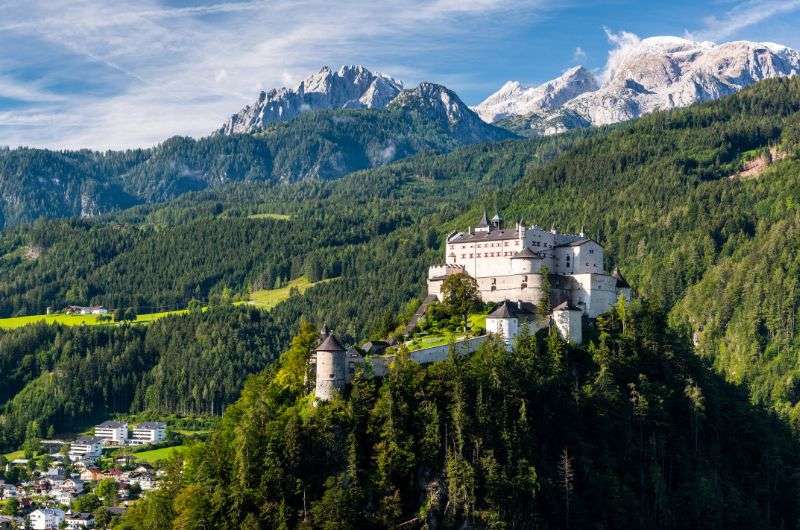
Hohenwerfen Castle
Best time to visit:
May through September. That's when it’s fully open, the falconry shows are flying, and you won’t freeze your toes off during the hike up. Though, this is Austria, so it still might rain.
Opening times:
- Open between April and the end of October
- Opening hours are 9 am–5 pm May through September, otherwise they close an hour earlier and are completely closed on Mondays
Prices:
- Tickets cost EUR 20, including the guided tour and castle lift.
- You can save a few euros by walking up instead of skipping the castle tour and just focusing on the witches.
How to get there:
Hohenwerfen Castle sits on top of a hill just off the A10 between Salzburg and Bischofshofen (about an hour’s drive from Salzburg). Park for free below the castle and either hike up or take the funicular. You’ll see the castle from miles away—it’s not subtle.
Why it’s better than… going to Schönbrunn and pretending you care about chandeliers
Because here you get medieval vibes, dramatic mountain scenery, and an exhibit on witches and demons—without needing to elbow your way through school groups and cruise ship retirees.
Hohenwerfen is one of the best places to visit in Austria for people who love medieval architecture. It’s an impressive structure in a very beautiful location. On the other hand, don’t get your hopes up for the guided tour. There’s literally nothing inside the castle! The only thing I could admire was the wooden floor and maybe some frescoes. It’s not even furnished. Whether or not to participate in the tour is up to your judgment, but I warned you.
What I truly enjoyed, though, was the “Mythos Jackl” exhibition dedicated to witches’ and wizards’ history in Austria. It’s an interactive presentation with 3D holographic prisoners and many other intriguing artifacts of this gruesome era in Austrian history. Apart from the real witch cases, I enjoyed the display dedicated to Germanic/Central-European myths and mythical creatures. It reminded me of Czech children’s stories and sent me back to childhood for a while.
Pro tip: I strongly advise you to arrive early in the morning, as the parking lot gets filled up fast, especially if you’re visiting in the peak summer months.
9. Gmunden & Lake Castle Ort: Cute town, tiny island castle
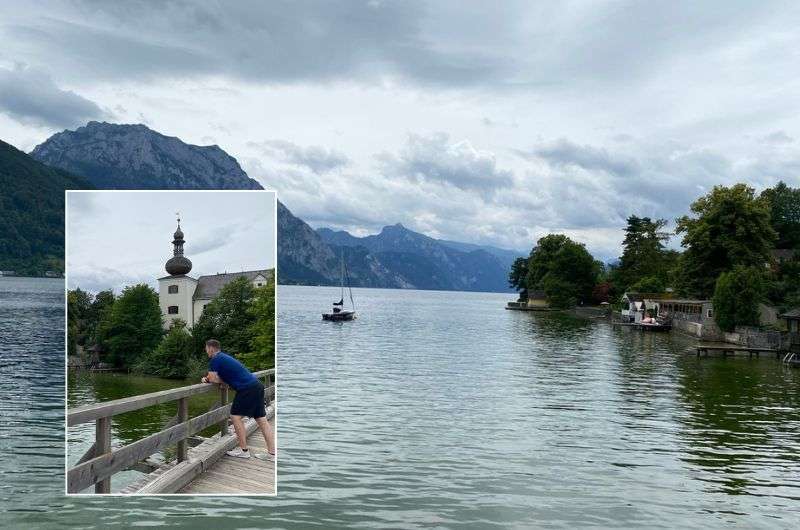
A charming town with a castle floating on its own little island — straight out of a storybook
Best time to visit:
March through October, when the castle is open and the lake doesn’t look like a frozen void.
Opening times:
- Open daily 10:30 am–4 pm
- Closed between November and beginning of March
Prices:
- Tickets cost EUR 5 + EUR 3 for a guided tour of the tower
How to get there:
Easy drive from Salzburg or Linz. Park in Gmunden and walk to the castle via the iconic wooden bridge.
Why it’s better than… Mondsee, the Sound-of-Music stop that everyone pretends to care about
While Mondsee trades on film trivia and one over-promoted church, Gmunden has actual charm and way less tourists. It’s quieter, prettier, and home to a castle that feels like it floated out of a storybook.
On the shores of Traunsee lies the lakeside town of Gmunden. And yes, I say “cute” because it is—a small, polished place that won’t blow your mind with action, but might just charm you into staying longer than you planned. This one could qualify for your off the beaten path in Austria list—not something I do every day.
At first glance, it feels like a town built for lakefront strolls and long lunches. That itself wouldn’t land it a spot on this list. The real reason to come is Schloss Ort—a tiny island castle connected to land by a slender wooden pier.
It’s one of the oldest castles in Austria, dating back to the 10th century. Local legend says it was built by a lovestruck giant named Erla for his mermaid sweetheart, Blondchen. True or not, it gives the place a nice mythical touch. Inside, there’s a small exhibition called “Mythos Traunstein” focused on the region’s legends and geology. Not huge, but interesting enough to make the stop feel worthwhile.
If you’re already exploring Salzkammergut, Gmunden makes for a perfect short detour—a place to reset, wander the lake promenade, and get a dose of local Austrian charm without tourist chaos.
And on a calm morning, when the lake reflects the mountains like glass, Schloss Ort looks like it’s floating between worlds. Worth it for that view alone!
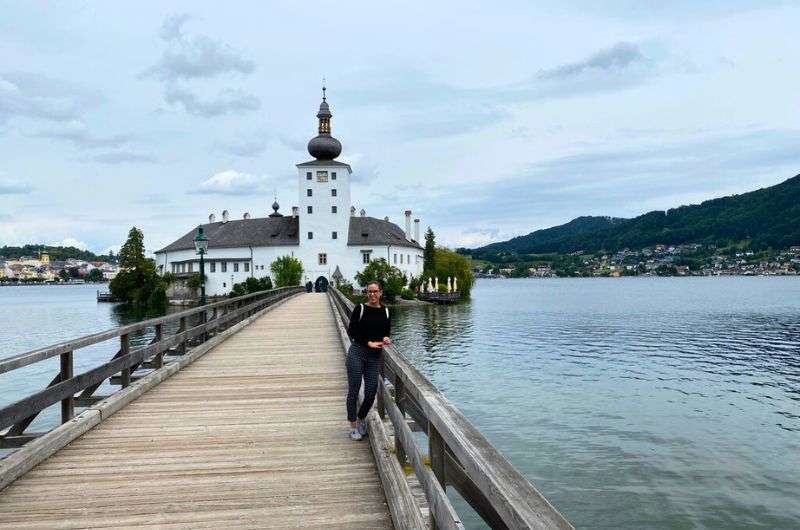
Schloss Ort
Amazing museums: Austria’s standout spots that you won’t find anywhere else
10. Hallstatt Salt Mine: History, helmets, and slides underground
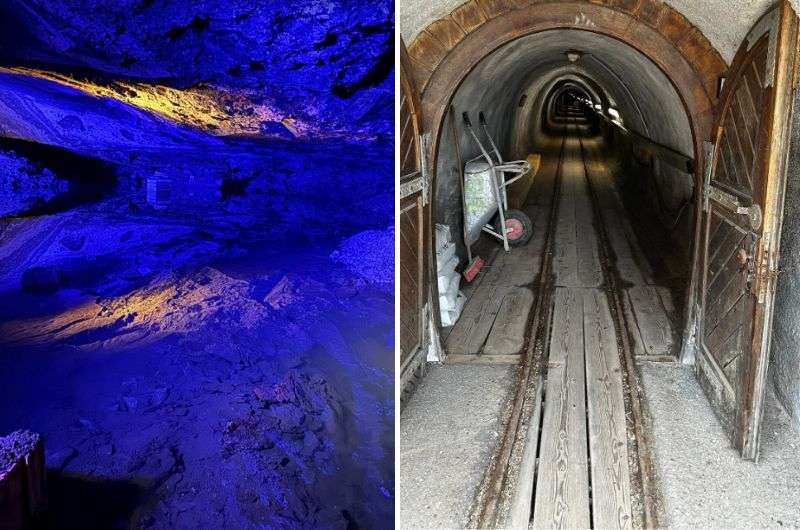
The Hallstatt salt mines were so interesting to see, especially because how closely they’re tied to the region’s history
Best time to visit:
Late spring through early fall. Tours run most of the year, but weather can mess with the funicular or trail access.
Opening times:
- Open daily 9:30 am–4 pm
- Note: From September 2025 to June 2026, the salt mines will be closed for renovation.
Prices:
- Tickets cost EUR 43, including the funicular
How to get there:
Same as Hallstatt—you’re already there. Take the funicular up the hill to the mine entrance.
Why it’s better than… the salt mine in Salzburg
Because this one lets you ride underground trains and go down giant wooden slides! It’s history without the boring bits. Also: 7,000 years old. Beat that.
The next attraction on my list of best places to visit in Austria is the oldest salt mine in the world—the Hallstatt Salzwelten.
You can get up to the mine on foot or use the cable car. The 90-minute tour begins with a train ride inside the caves, which is an exciting experience in itself. We got helmets and raincoats and rode through very narrow spaces about a kilometer (0.60 mi) down to the heart of the mine.
One there, we came across the oldest wooden staircase, used by miners almost 3,000 years ago. Then the tour continued with a 2 km (1.3 mi) long exhibition and archeological excavations.
The best and most bizarre experience was the long slides down between the individual floors of the mine. It was super fun, but also unexpected.
I felt a bit like in the dwarf mine in The Lord of the Rings. It was thrilling and educational, and not something you’d expect on a “Austria’s best attractions” list, but totally worth it in my opinion.
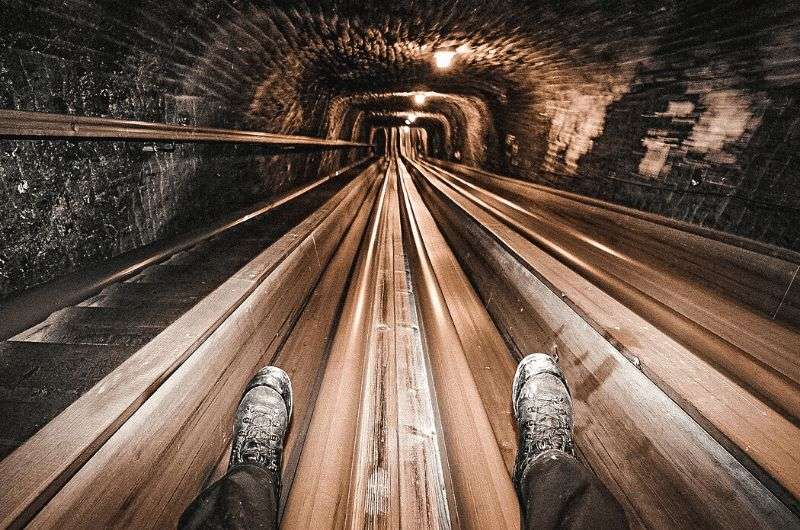
Deep in the Hallstatt Salt Mine, you can zip down wooden miner slides just like they did centuries ago
Pro tip: Wear warm clothes and sturdy shoes for the salt mine visit. The temperature inside the mine is around 8 °C (46 °F).
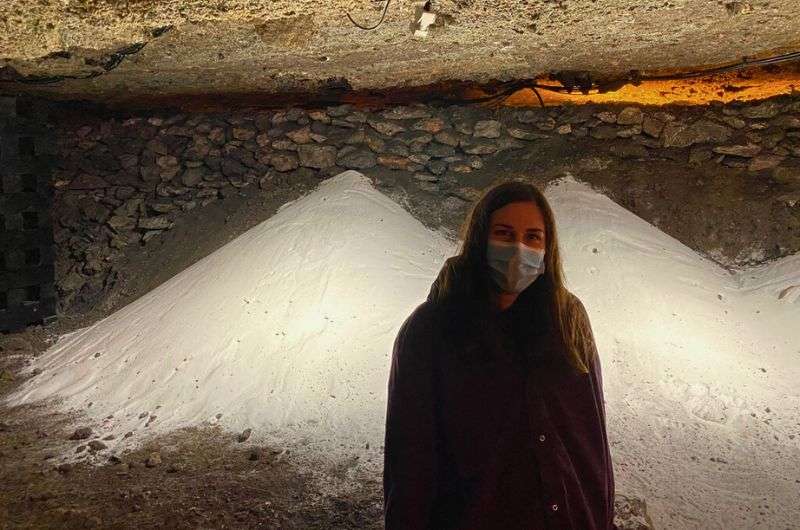
Hallstatt Salzwelten
11. 007 Elements: The James Bond Museum Built into a Mountain
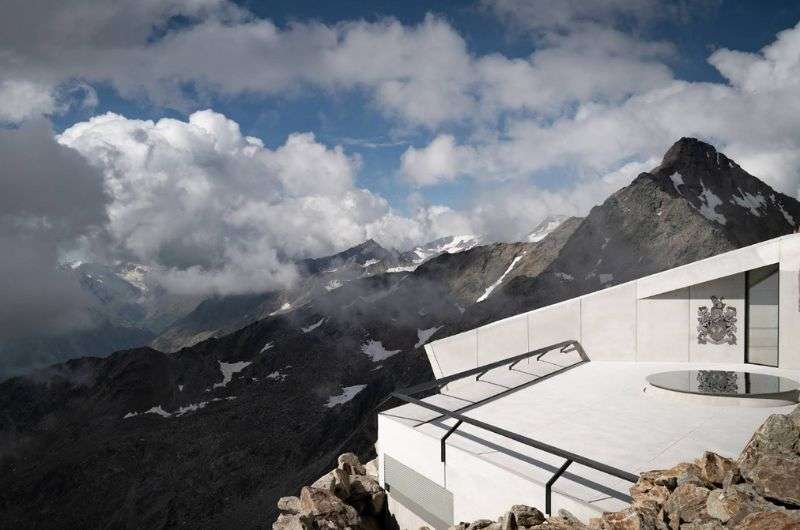
The 007 Elements museum in Sölden is the ultimate Bond experience—hidden in the mountains
Best time to visit:
Ideally during the months it’s open (i.e. not in May or October/November). If you’re not into skiing, you’re better off visiting the area in the summer or early fall.
Opening times:
- Winter: end of November to end of April
- Summer: beginning of June to beginning of October
- Open daily 9 am–4:30 pm
Prices:
- EUR 24 for just 007 Elements
- EUR 59 combination ticket that includes the cable car ride up and down
How to get there:
Drive to Sölden, then take the Gaislachkoglbahn cable car up. You’ll know you’re in the right place when it feels like you’ve entered a Bond villain’s lair.
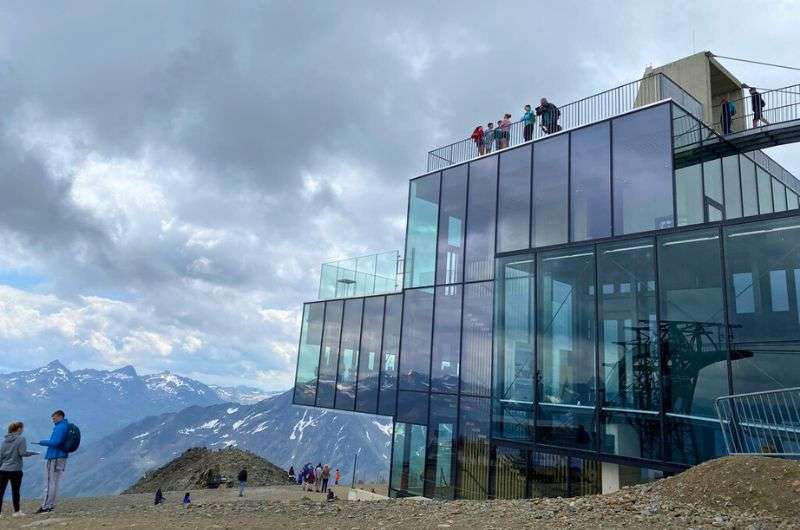
The ice Q restaurant with epic views @ 007 Elements
Why it’s better than… the Technisches Museum in Vienna
Vienna's tech museum is good, but does it sit at 3,000 m with floor-to-ceiling screens of exploding Aston Martins? Thought not.
I visited 007 Elements during my stay in Innsbruck, and it was incredible! First of all, you have to take a gondola up to the top of the mountain, which already gives the museum an extra cool factor.
Then, you go into this white bunker-looking thing and nerd out on the cinematic installations that take you through the major moments of James Bond movies. Special emphasis is put on Spectre, which was shot at Sölden.
It’s a must-see stop for fans of classy cars and badass agents. You will see how the tricks in the movie were made, the exhibition dedicated to action scenes, the hall of James Bond’s legacy, and more. I was super excited. It’s clear they thought through all the exhibitions, and when I walked the underground tunnel leading to the museum, I felt like an action hero myself.
Hungry? If you’re interested in an extremely expensive experience, head to the ice Q gourmet restaurant. It’s in the glass building that you can’t miss. I don’t know if you’ve ever had lunch at 3,038 m (9,967 ft), but the view is breathtaking, and so is the bill.
12. Swarovski Crystal Worlds: Psychedelic sparkle overload
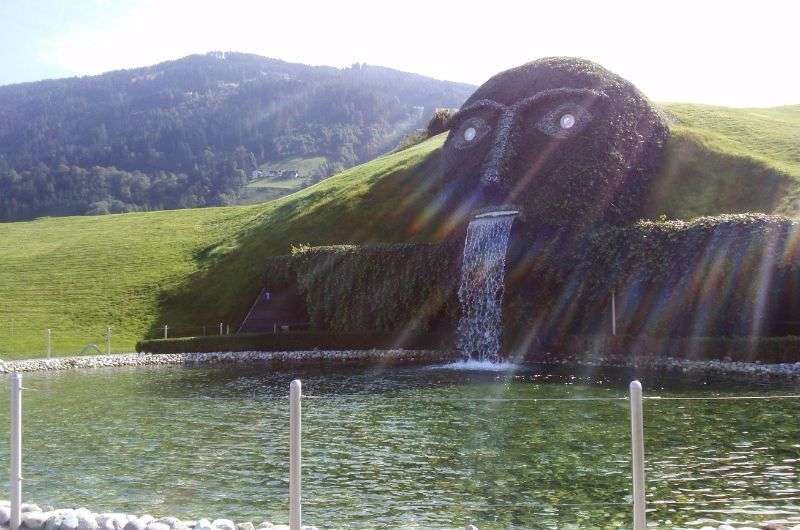
Not your average hillside—welcome to Swarovski Crystal Worlds near Innsbruck, Austria
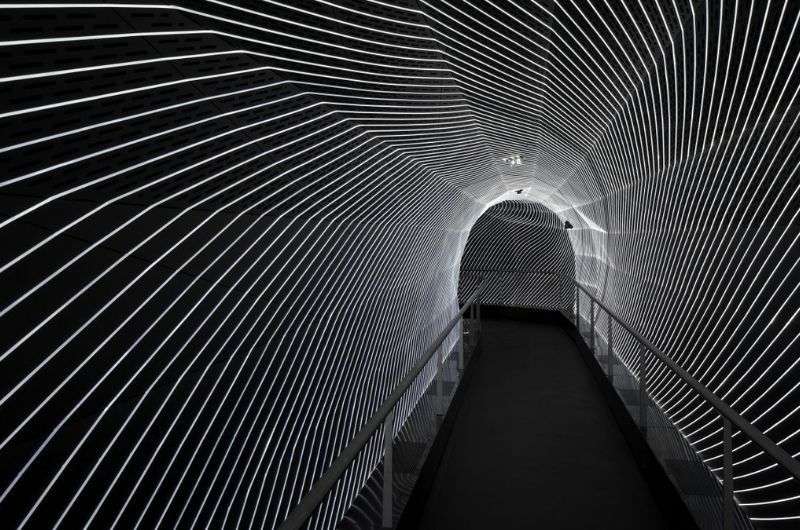
Swarovski Kristallwelten is one of the most unique places to visit in Austria
Best time to visit:
Year-round. It’s mostly indoors and weather-proof. Just avoid weekends and Austrian school holidays.
Opening hours:
- Daily from 9 am–7pm
Prices:
- Tickets cost EUR 24
How to get there:
A short drive from Innsbruck. Easy to reach by car or bus. There’s also parking right outside the complex.
Why it’s better than… any art museum you thought about visiting in Vienna
Because it’s unique and it hits all five senses and then some. You don’t have to understand art history to enjoy spinning crystal rooms and a freaky garden gnome parade.
Swarovski Kristallwelten (Swarovski Crystal Worlds) was one of the biggest surprises on my trip to Austria. Swarovski Crystal Worlds is located a few minutes by car outside of Innsbruck and it’s very sophisticated, offering an immersive experience filled with art, light, and sound. And bling. .
My take: One could say there’s nothing for men to see here. I say everyone can be a princess from time to time. I had zero interest or deep knowledge of the Swarovski brand before I visited, but this experience was extremely captivating.
This large complex comprises the museum, gardens, observation deck, playground, and even the Roman excavation site! The tour takes around 2 hours and the exhibition itself attacks all your senses, there’s I dare say psychedelic display. And the whole route is accompanied by music and a light breeze and all kinds of gadgets.
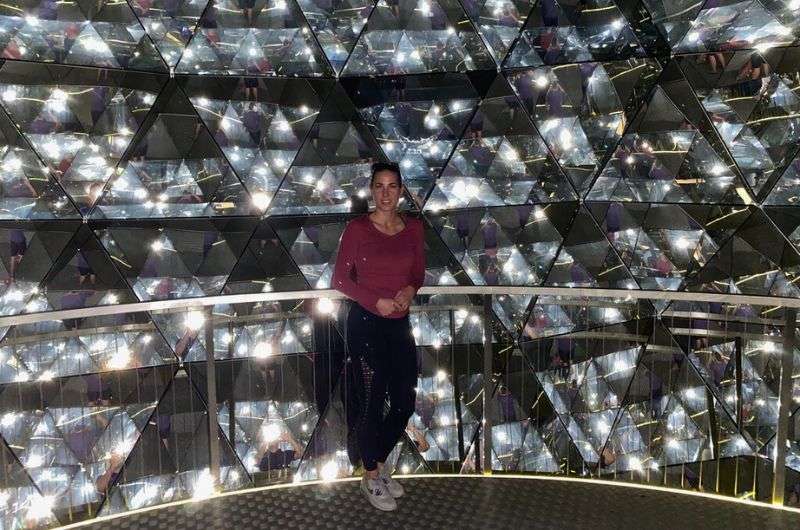
Swarovski Kristallwelten is quite literally one of the most beautiful places in Austria
Sometimes, all you need to do is take the first step... I've filtered out the best hotels in Austria for you
Save it for yourself to come back to later, or share with your friends on social media!
I've already planned your ititnerary for the trip, complete with my travel tips.
You might also be interested in reading:
- A Detailed 10-Day Austria Itinerary
- 3 Days in Vienna: The Ultimate Itinerary
- What is Austria Known For? 13 Tips and Tricks for Your Vacation
- 9 Unusual Things to do in Vienna
- 7 Top Tourist Cities in Austria: Highlights, Trips, Hotels, and More
This post contains affiliate links. If you make a booking through one of my links, I may earn a small commission—at no additional cost to you. Thank you for your support!
TL;DR: The best places to visit in Austria (split into categories)
Wait, really no Vienna? What about Schönbrunn Palace?
Epic nature & mountains: Austria’s best places created by Mother Nature
1. Grossglockner High Alpine Road: Austria’s most mind-blowing drive
2. Krimmler Waterfalls: Europe’s Tallest, Austria’s Most Underrated
3. Sigmund Thun Klamm: Austria’s most underrated gorge walk
4. Dachstein Glacier with heart-stopping viewing areas & cool ice caves
5. Zell am See & Kitzsteinhorn glacier: Alpine views with a bonus lake
6. Liechtenstein Klamm: Gorge walk with waterfall finale
Historic towns & castles: Places that are really worth your time
7. Hallstatt: More than just a cute Austrian village
8. Hohenwerfen Castle: Fortress with a view (and witch holograms)
9. Gmunden & Lake Castle Ort: Cute town, tiny island castle
Amazing museums: Austria’s standout spots that you won’t find anywhere else
10. Hallstatt Salt Mine: History, helmets, and slides underground
11. 007 Elements: The James Bond Museum Built into a Mountain




Comments | Thoughts? Give us a shout!
Recommended articles
Hallstatt is absolutely worth visiting if you come prepared and don’t expect to see some hidden alpine village that no one’s heard of. The combo of lakeside charm and alpine drama is pretty much unbeatable.
Most of these day hikes in Austria are easy to moderate, deliver big on scenery, and don't waste your time. That means you can knock them out in half a day and still make it to dinner with your knees intact.
Forget about Vienna! Zell am See-Kaprun is a must-visit location in Austria. Lovely region ideal for summer vacation as well as a winter hideaway. Here are my personal top picks of things to do.
About me
Hi, I’m Jan. I travel fast and intensely, whether I’m exploring the buzz of Tokyo in 3 days or road-tripping through mountains and beaches on a 3-week Thailand adventure. And no matter where I am, you’ll always find me in a comfortable hotel at night and eating the best food.
If that sounds like your kind of journey, hop on board, and let’s explore the world together!
I started this blog after realizing how tough it can be to find reliable, authentic travel info. You wouldn’t believe how many “travel bloggers” never even visit the places they write about! On Next Level of Travel, you can count on my full honesty and insights drawn from my firsthand experiences.
More about meHere’s the deal: not every destination is all superlatives and unicorns. I’ll let you know if a tourist attraction isn’t worth your time, like skipping overrated stops in my 2-week Spain itinerary. And when I find something truly special—like the perfect mix of culture and nature in Cape Town—you can trust that it’s worth adding to your itinerary.
Next Level of Travel s.r.o.
ID: CZ07036612
Adress: Voctářova 2449/5, Praha, Czech Republic
Created by myTimi